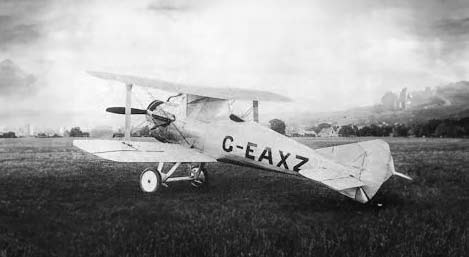A British naval fighter biplane of WWI legacy, the Gloster Mars I, known as Nightjar, featured a rotary engine and was designed for carrier operations. The article delves into the Gloster Mars I’s historical context, design, performance, and military use. The aircraft’s inception during the transitional post-WWI period, its technical specifications, operational capabilities, and role in military aviation history are examined in detail.
The era following World War I was a time of rapid technological development in military aviation. The Gloster Mars I, also known as the Gloster Nightjar, was a reflection of this transformative period, representing a blend of tried-and-tested WWI fighter design with the burgeoning needs of modern naval aviation.
History of the Development of the Gloster Mars I:
The Gloster Mars I’s development was deeply rooted in the immediate post-WWI context, where the Royal Navy sought a carrier-based aircraft capable of meeting the unique demands of naval warfare. This quest was a response to the evolving nature of naval engagements, recognized during WWI, and the increasing importance of air support in maritime operations.
The aircraft’s development was initiated by the Gloster Aircraft Company, a nascent entity born out of the post-war reorganization of the British aviation industry. The design was heavily influenced by the company’s previous work, the successful Gloster Sparrowhawk, itself a derivative of the famous Sopwith Camel.
Launched in the early 1920s, the program aimed to create a fighter that could operate from the decks of carriers, which were still a novel concept at the time. The Gloster Mars I first took to the skies on March 21, 1921, piloted by test aviator Frank Barnwell.
Design of the Gloster Mars I:
The Gloster Mars I’s design was conventional for its time, with a biplane structure and an open cockpit, typical of the WWI era. However, it incorporated specific adaptations for naval operations, such as reinforced structures to withstand the rigors of carrier landings and takeoffs. The wingspan was 30 feet (9.14 meters), and the length was 20 feet (6.1 meters), dimensions that allowed for efficient storage on carriers.
The aircraft featured a Bentley BR2 rotary engine, which delivered a solid 230 horsepower. The powerplant was chosen for its proven reliability and performance. The airframe was constructed primarily of wood and fabric, which kept the weight to a minimum—around 2,149 pounds (975 kilograms) empty.
However, the Gloster Mars I had its drawbacks, including the challenges posed by the rotary engine, such as torque effects and fuel consumption. Additionally, its biplane design limited its speed compared to the emerging monoplane designs.

Performance of the Gloster Mars I:
The Gloster Mars I’s Bentley BR2 engine propelled the aircraft to a top speed of approximately 113 mph (182 km/h), a modest velocity when compared to newer designs of the era. The service ceiling reached was 19,000 feet (5,791 meters), with a range of 300 miles (483 kilometers). While not the most powerful compared to the increasingly sleek and aerodynamic monoplanes, it was a reliable and sturdy machine that served its purpose as a naval fighter.
Military Use and Combat of the Gloster Mars I:
The Gloster Mars I was armed with two forward-firing .303 in (7.7 mm) Vickers machine guns, standard armament for British fighters at the time. It was designed primarily for the Royal Navy’s Fleet Air Arm and was one of the early adopters of carrier-based aviation.
However, the aircraft saw limited use in actual combat. As naval aviation tactics and technology rapidly evolved, the Gloster Mars I quickly became outdated. The design did not see widespread service or significant combat action. It did not compete with many aircraft as it was more of a transitional model leading to more advanced and capable fighters.
The Gloster Mars I was not sold to other countries and remained in service with the British Royal Navy for a short period before being superseded by more advanced aircraft such as the Fairey Flycatcher. The last of the Nightjars were retired from active service in the mid-1920s.
The Gloster Mars I, or Nightjar, was emblematic of an era of transition in military aviation, bridging the gap between the pioneering days of World War I and the more advanced period of inter-war military aviation development. Its significance lies not in its combat record or widespread use but in its role as a stepping stone in the evolution of carrier-based aircraft design. The Gloster Mars I contributed to the foundation of naval aviation, paving the way for future generations of carrier aircraft that would play pivotal roles in global maritime security.
Back to the Warbirds section.